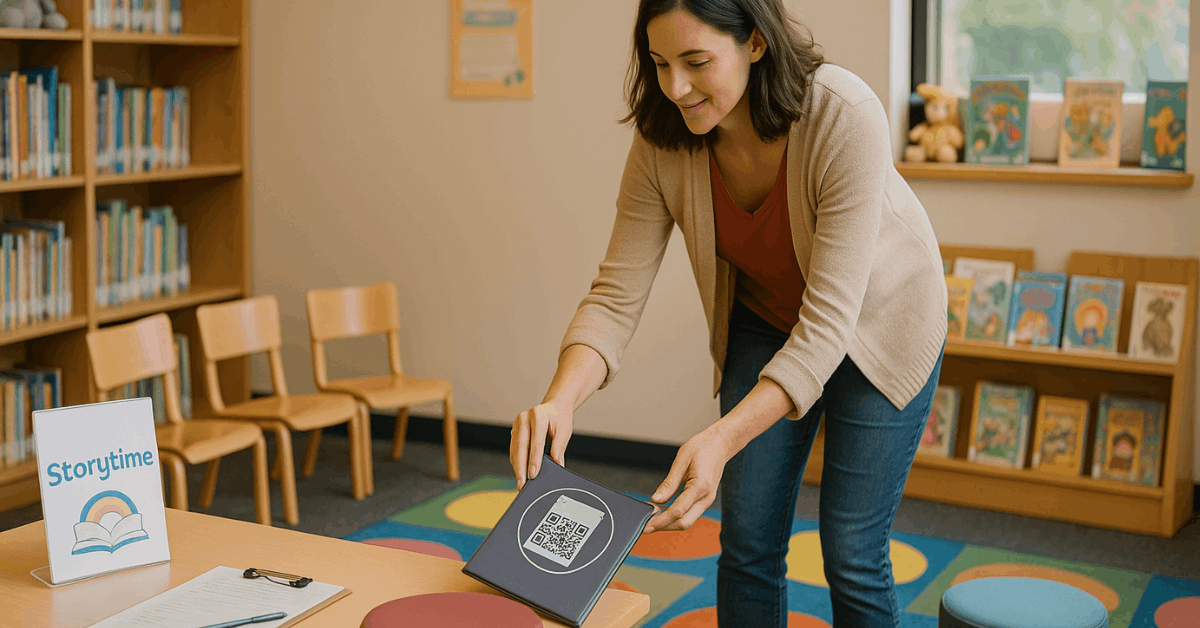Part-Time Library Jobs attract students, career changers, and community-minded professionals seeking meaningful work on a predictable schedule.
Effective applications start with a tight match to the posting, a tailored library assistant resume, and clear availability for evenings or weekends.
Credible sources confirm that frontline roles prioritize service skills and organization; professional librarian roles commonly list MLIS preferred or required.

What Part-Time Library Jobs Involve
Daily work centers on helping patrons locate materials, maintaining organized shelves, processing checkouts and returns, and supporting basic tech needs on public PCs or self-service stations.
Task variety grows in larger systems, adding program setup, meeting-room logistics, or digital collections support.
U.S. occupational profiles group these tasks under technicians/assistants and librarians/media specialists, with librarians supervising and designing services while paraprofessionals execute frontline operations.
Where Part-Time Roles Exist
Public libraries hire for community-facing circulation and programs that run into evenings and weekends.
Academic libraries rely on part-time desk coverage, tutoring support, and specialized lab monitoring during extended hours.
School libraries tap aides for collection care and classroom collaboration, often aligned to the school day. Special libraries in hospitals, law firms, or museums post targeted shifts to match internal client demand and security requirements.
Core Roles Suited to Part-Time Work
A quick scan of common titles helps narrow choices and tailor materials to actual tasks and minimum qualifications.
| Role (typical title) | What you’ll actually do | Baseline qualifications | Hiring signals |
| Library Assistant | Perform circulation desk duties, shelving, basic patron help, issue/receive materials | HS diploma/GED; customer service and accuracy | “Evenings/weekends,” “service orientation,” “cash handling” |
| Library Aide/Page | Shelf reading, returns, materials routing | HS student or graduate; stamina and detail | “Light lifting,” “cart work,” “after-school shifts” |
| Library Technician | Catalog support, databases, equipment setup, advanced desk coverage | Certificate/associate; prior library experience | “Copy cataloging,” “ILL,” “metadata basics” |
| Program Assistant | Prep and host events; track attendance; room setup | Service mindset; child/teen comfort; safety awareness | “Storytime,” “maker events,” “adult learning workshops” |
| Access/Reference Assistant | Answer directional/reference questions; database coaching | Bachelor’s preferred; strong search skills | “Instruction support,” “LibGuides,” “chat reference” |
How to Apply for Part-Time Library Jobs
Clear, practical steps outperform generic advice. Plan for targeted searches, precise documents, and timely follow-through while building evidence of service and tech fluency.
Expect screening focused on customer scenarios, availability, and familiarity with library workflows. Applications that mirror the posting’s terminology and demonstrate verified skills move forward consistently.
Step 1 — Target the right setting and shift window
Part-time coverage clusters around afternoons, evenings, and weekends. Confirm commute time, branch locations, and realistic weekly hours, then shortlist roles that match availability.
Step 2 — Build immediately relevant experience
Local library volunteer experience accelerates hiring and validates interest. Typical tasks include shelving, mending, holds processing, and event setup, evidence that directly maps to paid duties.
International and national bodies encourage volunteering for skill-building and networking across the field.
Step 3 — Search smarter, not broader
Favor online library job portals run by municipalities, university HR sites, national associations, and large systems.
Filter for “part-time,” “hourly,” or “temporary” and set alerts. When permitted, visit the branch to understand foot traffic and programs; notes from a brief visit strengthen interviews.
Step 4 — Tailor a library assistant resume for ATS
Mirror the posting’s verbs and nouns: “circulation,” “shelf-reading,” “materials handling,” “integrated library system (ILS),” “customer service.” O*NET language offers neutral phrasing for common tasks and helps avoid jargon.
Step 5 — Write a focused cover letter
Keep one page. Address each required qualification with a result-oriented example. Replace generic statements with brief evidence tied to service outcomes, accuracy rates, or event support.
Step 6 — Prepare for screening and desk simulations
Compile shift availability, conflict dates, and transportation plans. Expect scenario prompts on patron privacy, upset users, or device troubleshooting, plus quick shelving or alphabetization checks.
Practice concise answers to common library interview questions and prepare two questions about training and progression.
Resume, Keywords, and Cover Letters That Work
Applicant tracking systems reward exact matches to posting language. Short bullets that combine action, tool, and outcome read clearly: “Resolved six daily PC issues using standard scripts; reduced desk wait times.”
Align headings to conventional sections, Experience, Education, Skills, to avoid parser errors. Many systems request full applications even when a resume is uploaded; follow instructions precisely to avoid disqualification.
Cover letters should not restate the resume. Strong versions connect service wins to listed duties:
- accurate cash drawers,
- zero-error patron registration batches, or
- consistent program setup.
When transitioning fields, one compact paragraph can translate skills, retail or tutoring experience, to patron service and materials handling.
Pay, Hours, and Schedules
U.S. federal data places the May 2024 median annual wage at $64,320 for librarians and library media specialists; part-time paraprofessional roles pay less, often hourly.
Recent wage tables for library technicians show median annual pay near $39,310, while assistants trend lower depending on region and funding. Part-time shifts frequently include evenings and weekends, forming flexible library schedules that fit coursework or a second job.
Field-of-degree data for library science shows a notable share of graduates working part-time, reflecting the sector’s mix of hourly and professional positions. Use local HR pages for exact hourly ranges and union agreements where applicable.
Entry Paths and Credentials
Paraprofessional roles (aides/assistants/technicians) generally emphasize service skills over degrees and provide the fastest entry.
Professional librarian postings, especially in public and academic settings, frequently list MLIS preferred or required; ALA guidance notes most librarian roles expect an ALA-accredited master’s, while some systems hire without the degree in hard-to-fill contexts.
Country-specific or state-specific rules may apply for school librarians and certification.
Common Mistakes That Slow Hiring
Solid candidates sometimes miss on process rather than potential. Keep attention on the essentials and avoid these pitfalls.
- Generic documents that ignore the posting’s specific duties and tools.
- Overlooking stated instructions to submit a full application, not just a resume upload.
- Weak availability notes that omit evenings or weekends for desk coverage.
- Vague answers about patron privacy, behavior policies, or device help during interviews.
- Skipping references who can speak to accuracy, reliability, and service under pressure.

Where to Find Opportunities
Municipal job boards, national library associations, and university HR portals post steady part-time openings.
International networks such as IFLA share training and volunteering pathways that improve employability and broaden contacts, which helps when relocating or pursuing hybrid/remote roles like virtual reference.
Interview Prep and Practicalities
Effective prep starts with a brief summary of each job’s fit points, service wins, tech comfort, shelf accuracy, and two short stories that demonstrate empathy and policy adherence.
Role-play a checkout conflict, a lost-card conversation, and a quiet-space reminder using respectful language.
For academic libraries, skim LibGuides and hours pages to reference popular databases or study-room policies during the interview. Bring a concise availability sheet and a question about onboarding or first-month training.
Advancement Without Losing Flexibility
Part-time hours can grow into stable pathways: substitute pools, limited-term contracts, or split roles across branches.
Supervisors often promote punctual, accurate staff who show initiative, especially when they complete micro-credentials in readers’ advisory, basic cataloging, or digital literacy instruction.
Participation in local committees, webinars, or community events builds credibility. Global frameworks highlight libraries’ role in development and inclusion; aligning applications to literacy, digital access, or community health goals resonates with hiring panels.
Quick Read: Your First 30 Days
Plan to master circulation workflows, shelving standards, and service scripts. Learn the ILS basics for check-in/checkout, fines, and holds. Shadow a programs librarian to understand event setup and teardown.
Ask for feedback after the first weekend shift and adjust patterns that slow lines or create backlogs.
Conclusion
Part-time roles in libraries reward reliable service, organized habits, and patient communication.
Strong applications prove fit through targeted keywords, verified availability, and a short track record of directly relevant experience or volunteering.
After landing a shift, early focus on circulation accuracy, prompt help at busy desks, and clear communication positions emerging staff for additional hours, broader duties, and eventual progression into permanent roles.











